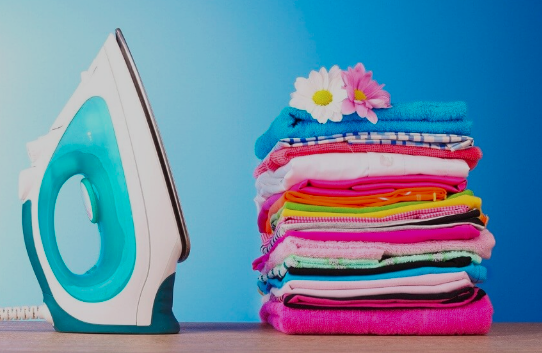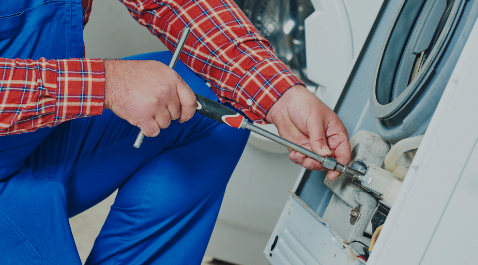Mastering the Art of Stain Removal: A Comprehensive Guide to Preventing Long-Term Damage

Stains are inevitable, but they don’t have to be permanent marks on your belongings. Whether it’s a spilled glass of red wine on your favorite carpet or a stubborn oil stain on your cherished clothing, knowing how to effectively remove stains is a valuable skill. In this comprehensive guide, we will explore various tips and techniques for removing stains and preventing long-term damage.
Understanding Stain Types: The Foundation for Effective Removal
Before diving into stain removal techniques, it’s crucial to identify the type of stain you’re dealing with. Different stains require different approaches. Common stain categories include:
1. Water-Based Stains
Water-based stains, such as those caused by coffee, tea, or juice, are best treated with a blotting technique. Avoid rubbing, as it can spread the stain.
2. Oil-Based Stains
Stains from oils, grease, or makeup need a different strategy. Absorb excess oil with talcum powder or cornstarch before applying a suitable stain remover.
3. Protein-Based Stains
Stains from bodily fluids like blood or sweat fall into this category. Use cold water for blood stains and an enzymatic cleaner for protein-based stains.
4. Tannin-Based Stains
Red wine, tea, and ink fall under tannin-based stains. Act quickly, blot gently, and use a mixture of vinegar and water for effective removal.
Act Swiftly: The Golden Rule of Stain Removal
The most effective way to prevent long-term damage from stains is to tackle them immediately. Time is of the essence, and the longer a stain sets, the harder it becomes to remove. Follow these steps for swift action:
1. Blot, Don’t Rub
Gently blot the stain with a clean cloth or paper towel. Rubbing can damage the fibers and spread the stain.
2. Identify the Fabric
Different fabrics require different treatments. Check the care label on clothing or furniture to determine the best approach.
3. Test in an Inconspicuous Area
Before applying any stain remover, test it in a hidden area to ensure it won’t cause discoloration or damage.
DIY Stain Removal Solutions: Harnessing the Power of Household Items
In many cases, effective stain removal can be achieved using common household items. Here are some DIY solutions that can save the day:
1. Baking Soda and Vinegar
Create a paste using baking soda and water for tough stains. Vinegar can be effective for eliminating odors and breaking down stains.
2. Salt for Red Wine Stains
Pour salt on a red wine spill immediately to absorb the liquid. Later, rinse and treat the stain with cold water.
3. Lemon Juice for Ink Stains
Lemon juice can work wonders on ink stains. Apply it directly and let it sit for a few minutes before rinsing.
Investing in Quality Stain Removers: A Wise Decision for Long-Term Preservation
While DIY solutions can be effective, there are instances where investing in commercial stain removers is the prudent choice. Quality stain removers are specially formulated to target specific types of stains without causing harm to fabrics. Consider the following when selecting a stain remover:
1. Read Product Labels
Ensure the stain remover is suitable for the type of stain and fabric you’re dealing with. Read and follow the product instructions carefully.
2. Consider Eco-Friendly Options
Many eco-friendly stain removers are effective without harmful chemicals. These options are gentler on fabrics and the environment.
3. Stain Pens for On-the-Go Emergencies
Keep a stain pen in your bag for immediate treatment when you’re away from home. These convenient tools can prevent stains from setting in.
Professional Help: When to Call in the Experts
Some stains are stubborn and may require professional assistance. Knowing when to seek help can save you time, effort, and potential damage to your belongings.
1. Antique or Delicate Fabrics
Delicate fabrics, vintage textiles, or valuable garments may benefit from the expertise of professional cleaners who understand the intricacies of different materials.
2. Large or Persistent Stains
If a stain covers a large area or proves resistant to DIY efforts, it’s wise to consult with professionals who have access to advanced cleaning techniques and equipment.
3. Preserving Upholstery and Carpets
For stains on carpets or upholstery, professional steam cleaning can ensure thorough removal without compromising the integrity of the material.
Preventative Measures: Guarding Against Future Stains
The best way to handle stains is to prevent them from occurring in the first place. Adopting proactive measures can safeguard your belongings from potential damage.
1. Scotchgard and Fabric Protectors
Apply fabric protectors like Scotchgard to create a barrier against stains. These products make it easier to clean spills before they become permanent.
2. Establish Stain-Free Zones
Set rules for certain areas, especially if you have children or pets. Restrict activities that could lead to spills in specific rooms or on particular pieces of furniture.
3. Regular Maintenance
Perform routine maintenance on carpets, upholstery, and clothing to catch potential stains early. Regular cleaning and care can extend the life of your belongings.
Conclusion: A Stain-Free Future
Mastering the art of stain removal is not just about addressing spills; it’s about preserving the longevity and beauty of your possessions. By understanding stain types, acting swiftly, employing DIY solutions, investing in quality stain removers, knowing when to seek professional help, and adopting preventative measures, you can ensure a stain-free future for your cherished belongings. Arm yourself with knowledge, act decisively, and watch as stains become mere temporary inconveniences rather than long-term threats.




